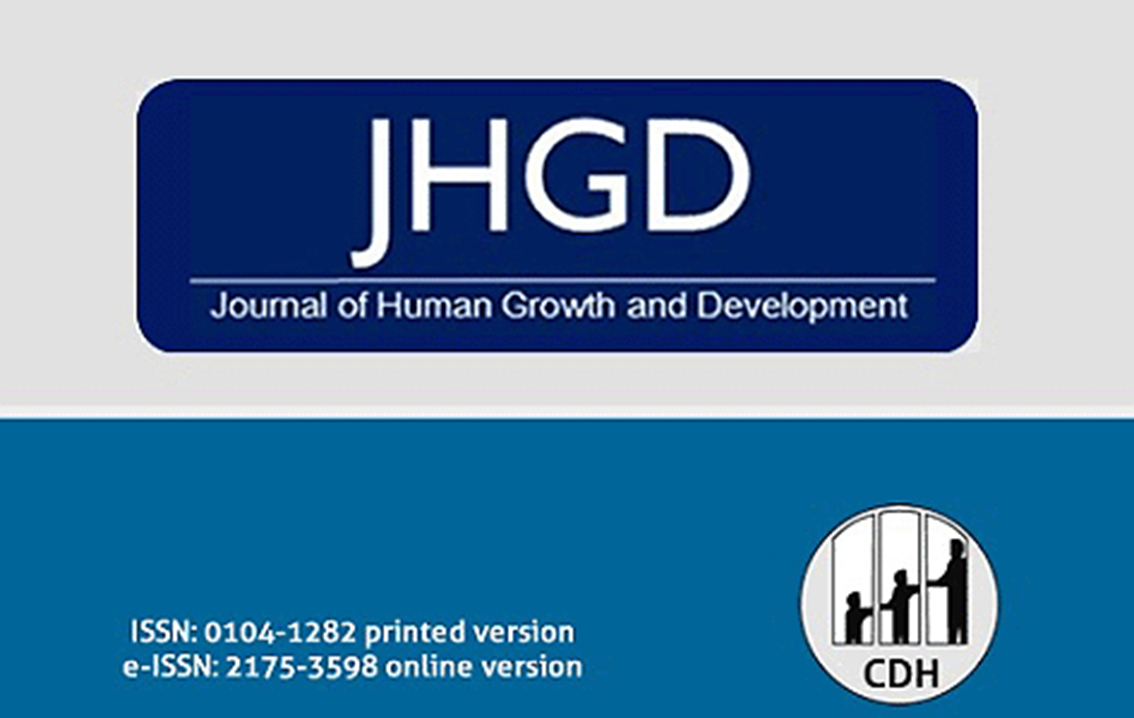Vectocardiographic analysis of right ventricular electrical conduction delay
DOI:
https://doi.org/10.36311/jhgd.v32.13778Palavras-chave:
Estimulação elétrica, bloqueio de ramoResumo
Introdução: A interpretação eletrocardiográfica do atraso final da condução no ramo do ventrículo direito do coração já gerou algumas hipóteses de que esse ramo direito não é único como demonstrado anatomicamente e que pode ser divido em ramos terminais distintos quando analisamos o traçado através do vetocardiograma.
Método: Separados 227 eletrocardiogramas com características típicas definidas como atraso final de condução dos pacientes do serviço de eletrocardiografia do Centro Universitário FMABC, de ambos os sexos na faixa de idade de 18 a 87 anos, etnias, peso e estatura variadas com fatores de risco cardiovascular ou sem fator de risco, realizamos vetocardiograma nesses pacientes para observar o comportamento da porção final da condução elétrica.
Resultado: Analisando os traçados vetocardiográficos dos pacientes que apresentavam o atraso final de condução no eletrocardiograma, confirmamos no registro pelo plano frontal, a presença do atraso final de condução, porém registravam em três regiões distintas; 103 pacientes no quadrante superior direito entre -120º e -150º, 45 pacientes no quadrante inferior direito entre +170º e -170º e medial e 79 pacientes no quadrante inferior direito entre +110º e + 140º.
Conclusão: A despolarização elétrica do coração no ventrículo direito no traçado eletrocardiográfico aparentemente registra alterações típicas que podemos diagnosticar como uma despolarização de um feixe único, porém ao realizarmos vetocardiograma, registramos três zonas distintas de despolarização ventricular direita com atraso, ou seja, três setores distintos da parede livre do ventrículo direito como atraso Tipo I (superior), Tipo II (inferior), e Tipo III (medial).
Downloads
Referências
Pastore CA, Pinho JA, Pinho C, Samesima N, Pereira Filho HG, Kruse JC, et al. III Diretrizes da Sociedade Brasileira De Cardiologia Sobre Análise e Emissão de Laudos Eletrocardiográficos. Arq Bras Cardiol. 2016; 106(4 Suppl 1): 1-23.
Pastore CA, Moffa PJ, Tobias NM, de Moraes AP, Nishioka SA, Chierighini JE, et al. [Segmental blocks of the right bundle-branch and electrically inactive areas. Differential electro-vectorcardiographic diagnosis]. Arq Bras Cardiol. 1985; 45(5): 309-17.
Maheshwari S, Acharyya A, Schiariti M, Puddu PE. Frank vectorcardiographic system from standard 12 lead ECG: An effort to enhance cardiovascular diagnosis. J Electrocardiol. 2016; 49(2): 231-42.
Pérez-Riera AR. Value of 12 lead electrocardiogram and derived methodolgies in the diagnosis of Brugada disease. In: Antzelevitch C, editor. The Brugada Syndrome From Bench to Bedside. London: Blackwell Futura; 2005. p. 87-110.
Perez-Riera AR, Ferreira Filho C, de Abreu LC, Ferreira C, Yanowitz FG, Femenia F, et al. Do patients with electrocardiographic Brugada type 1 pattern have associated right bundle branch block? A comparative vectorcardiographic study. Europace. 2012; 14(6): 889-97.
Babai Bigi MA, Aslani A, Shahrzad S. aVR sign as a risk factor for life-threatening arrhythmic events in patients with Brugada syndrome. Heart Rhythm. 2007; 4(8): 1009-12.
Luna Filho B, Bocanegra JA, Pfeferman A, Andrade JL, Martinez Filho EE. [Fascicular block of the His bundle: critical approach for its identification]. Arq Bras Cardiol. 1989; 53(5): 261-5.
O. BR, Mann DL, P. ZD, Libby P. Braunwald Tratado de doenças cardiovasculares. 9 ed. Brasil: Elsevier; 2013.
Nagao K, Toyama J, Kodama I, Yamada K. Role of the conduction system in the endocardial excitation spread in the right ventricle. Am J Cardiol. 1981; 48(5): 864-70.
Moore EN, Hoffman BF, Patterson DF, Stuckey JH. Electrocardiographic Changes Due to Delayed Activation of the Wall of the Right Ventricle. Am Heart J. 1964; 68: 347-61.
Smith LA, Kennamer R, Prinzmetal M. Studies on the mechanism of ventribular activity. IV. Ventricular excitation in segmental and diffuse types of experimental bundle-branch block. Circ Res. 1954; 2(3): 221-30.
Uhley HN, Rivkin LM. Electrocardiographic Patterns Following Interruption of the Main and Peripheral Branches of the Canine Left Bundle of His. Am J Cardiol. 1964; 13: 41-7.
Esmond WG, Moulton GA, Cowley RA, Attar S, Blair E. Peripheral Ramification of the Cardiac Conducting System. Circulation. 1963; 27(4): 732-8.
Torrent-Guasp F. Estructura y función del corazón. Rev Esp Cardiol. 1998; 51(2): 91-102.
Torrent-Guasp F, Kocica MJ, Corno A, Komeda M, Cox J, Flotats A, et al. Systolic ventricular filling. Eur J Cardiothorac Surg. 2004; 25(3): 376-86.
Downloads
Publicado
Edição
Seção
Licença
Copyright (c) 2022 Junior AAL, Raimundo RD, Barros RB, Abreu LC, Nikus K, Pérez-Riera AR

Este trabalho está licenciado sob uma licença Creative Commons Attribution 4.0 International License.







